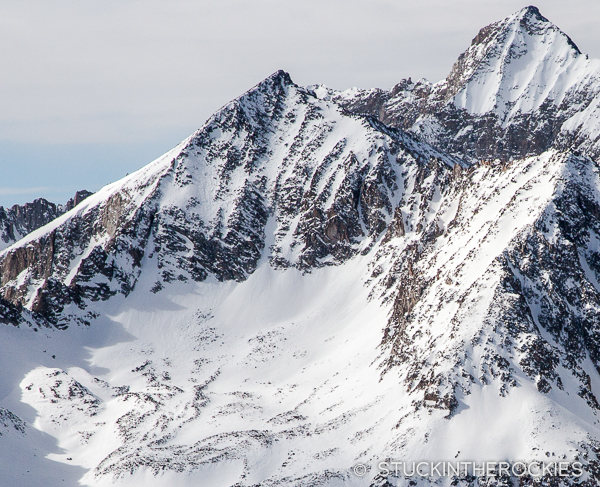
Just east of Capitol Peak, and composed of the same gray granite slabs and spires, is a little know high 13er named Clark Peak. At 13,580 feet it ranks right at #200 on the list of tallest mountains in the state. But don’t let that diminutive place deceive you. Clark Peak is challenging, if not outright dangerous to climb in the summer. And when it comes to skiing, the only practical, continuous ski line is down a steep couloir on the mountains East Face (pictured above).
Before you get to confront the challenges of skiing Clark Peak’s East Face, you’ll first have to clear some hurdles on the approach. The East Face route is located up Copper Creek, which is a minor drainage between West Snowmass Creek and Bear Creek (from Pierre Lakes). To reach Copper Creek you’ll need to follow the Snowmass Creek Trail for about four miles.
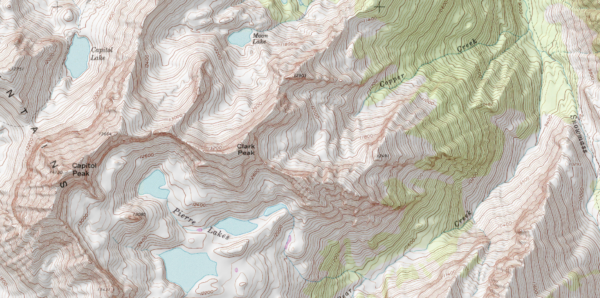
Once you reach the confluence of Copper Creek and Snowmass Creek, leave the Snowmass Creek Trail and look for a suitable path to cross. That can be a crux of the approach since it’s often flowing quite high in the spring season.
After getting across the west side of Snowmass Creek, prepare to deal with a steep bushwhack skin as you ascend Copper Creek. Go up anyway you seem to find enough space to move. If you stick to the creek bottom there are thick willows to contend with, and if you choose to ascend along the periphery, there are equally tight aspen saplings to battle— anyway you go you might find yourself in a mess of vegetation.
If you can persist through the overgrowth, you’ll eventually find some more space to operate. Keep ascending high into the basin. Eventually the snow covered rock glaciers of upper Copper Creek will come into view, along with the East Face of Clark at the far head of the valley.
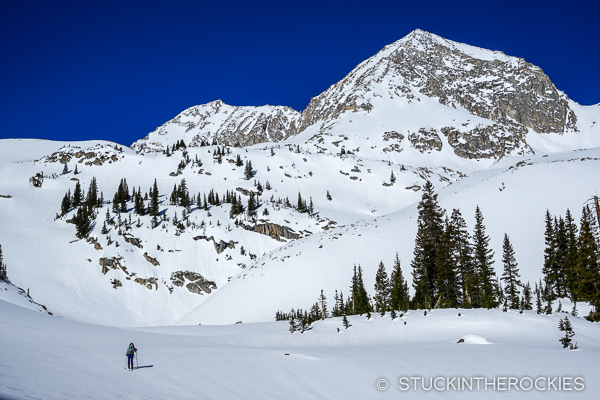
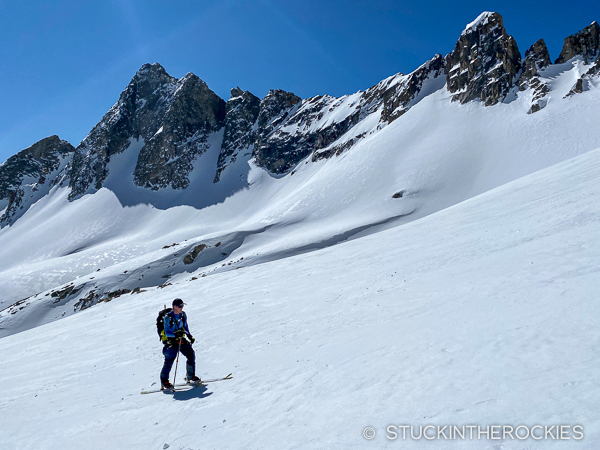

Study the snow lines and skin as high as you can. Switch to crampons when it gets steep and begin up the couloir that splits the East Face. Remember which routes offer continuous snow and which don’t, you’ll need that info for the ski back down.
After cramponing for 800-1000 vertical feet or so you’ll eventually reach the highest snow, where you can leave your skis and climb on the rocks about 15-20 feet to Clark Peak’s 13,580 foot summit.
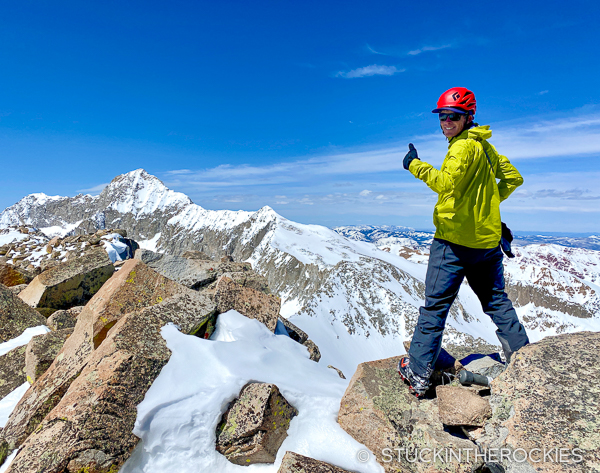
Take in the views. Capitol Peak is looming to the west. Sopris and Daly are out to the north. Snowmass Mountain, Pierre Lakes, and the Maroon Bells fill the view to the south and southwest. It’s quite a perch.
Carefully down climb back to the skis and descend. The steep East Face should be taken seriously, and once that’s behind you, enjoy the cruising through the rolling moraines of Copper Creek Basin. It’s really cool in there.
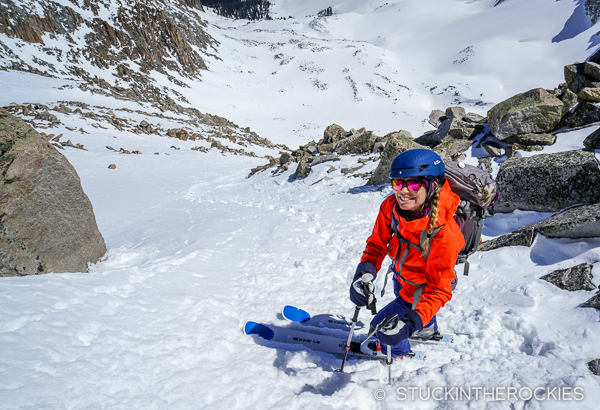
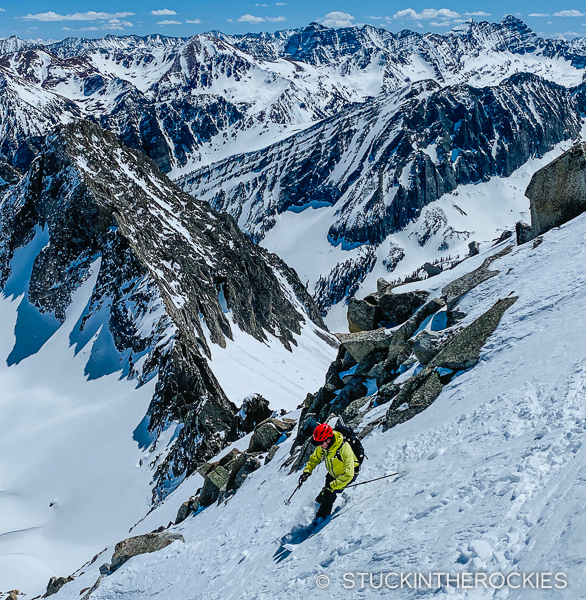
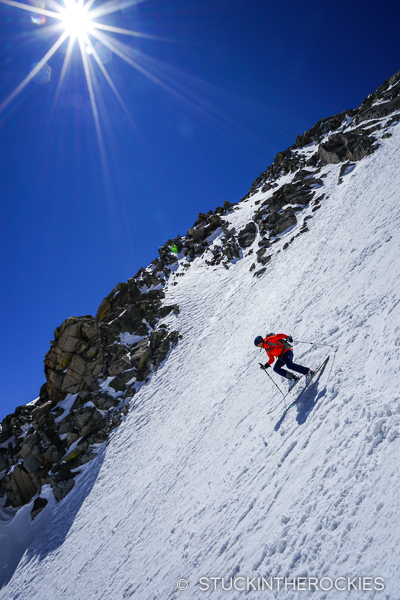
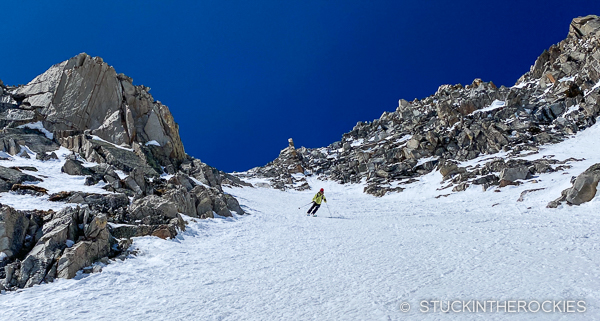
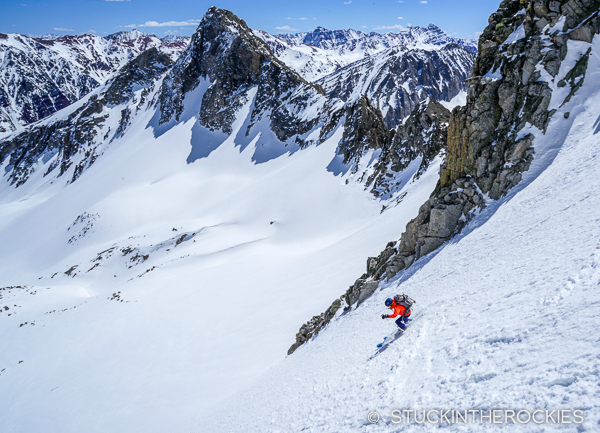
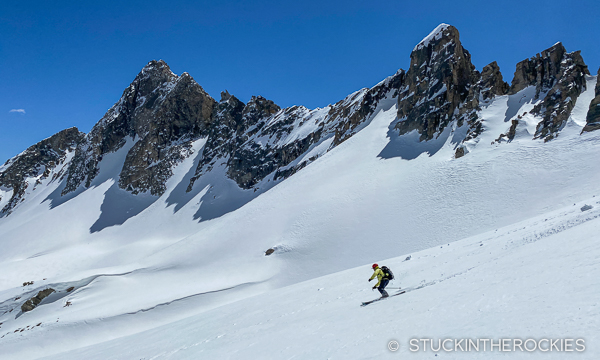
Hope for the best and plan for the worst on the exit. Softer snow makes the bushwhack and creek crossing challenging, and the four miles out on the Snowmass Creek Trail can be quite a bear if the snow in the valley has been melting out.
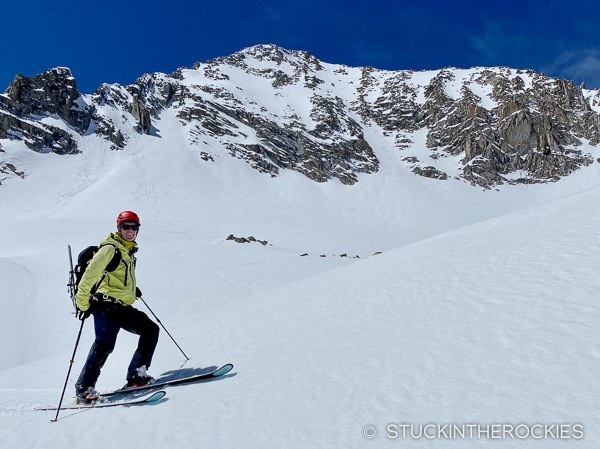
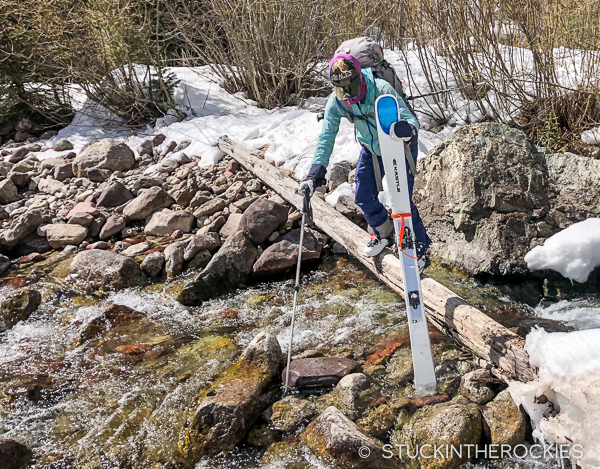
But it’s always worth it, right?

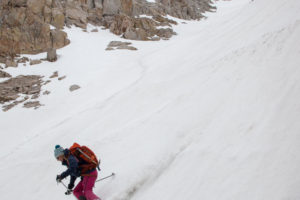
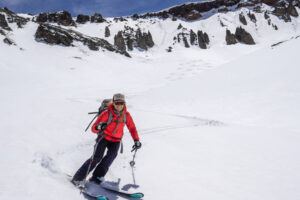

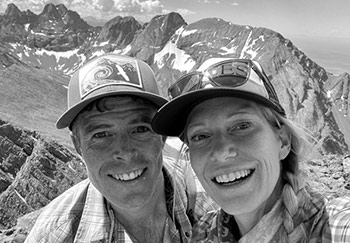






4 Comments
Leave your reply.